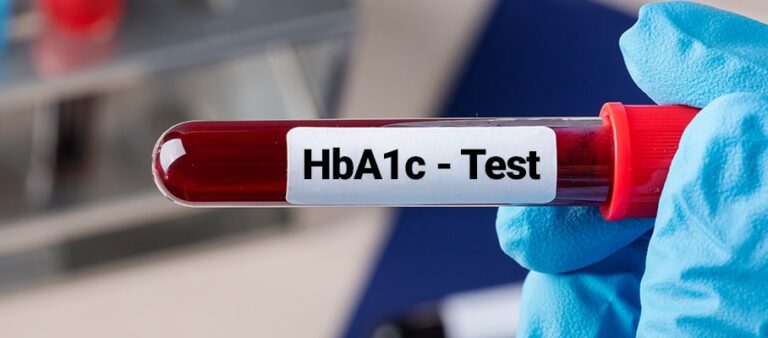Post-Collection Sample Handling: Our Quality Process
What happens to a blood sample after it’s collected? How does handling impact the accuracy of lab results? We focus on quality in our blood collection practices, ensuring reliable and accurate test results by considering blood collection time.
Our lab follows strict guidelines from start to finish. This includes careful collection, storage, and transport of samples. We aim for the best outcomes for our patients.
Our phlebotomy techniques keep blood samples in top condition. We know how critical proper collection, handling, and processing are. By following our guide, you can learn how to handle samples correctly. This helps us deliver accurate lab results.

Understanding Blood Sample Handling Procedures and Their Importance
Collecting blood samples correctly is key to keeping them safe and getting accurate lab results. It’s important to handle and store samples well to avoid damage. Our lab follows strict rules for keeping samples safe, including how to store and handle them.
Following the right steps for handling blood samples is essential for quality lab results. This means using the right tubes and following a color system. The PATH organization shows how important this is worldwide.
Critical Factors in Sample Integrity
Keeping samples safe involves proper collection, handling, and storage. Using the right needle size and mixing samples correctly can prevent damage. For chemistry tests, samples need to be mixed 8-10 times.
Impact on Laboratory Results
Bad handling can lead to wrong lab results. It’s important to avoid mixing samples too much to get accurate results. Normal samples should be clear, while damaged ones will look pink or red.
Quality Standards and Compliance Requirements
Our lab follows strict quality standards and rules. This ensures our handling meets the highest standards. We follow all guidelines for handling, storing, and shipping samples. Our phlebotomists also get formal training.
The table below summarizes the key guidelines for blood sample handling and storage:
| Sample Type | Storage Conditions | Time Limit |
|---|---|---|
| Serum and plasma samples | Refrigerated | Up to 48 hours |
| EDTA whole blood samples | Room temperature | Within 1 hour |
| Lithium heparin whole blood samples | Room temperature | Within 1 hour |
Essential Steps in Laboratory Specimen Processing
Our lab follows a strict protocol to ensure blood samples are of high quality. The process starts with checking the patient’s identity and labeling the sample correctly. This step is key to avoid mix-ups and ensure the sample is processed right.
We track the sample’s journey from collection to analysis. We keep detailed records of storage and transport conditions. This helps us maintain the sample’s integrity and quality for testing.
Initial Sample Reception Protocol
Our initial sample reception protocol includes several important steps:
- Verifying the patient’s identity using at least two identifiers
- Labeling the sample correctly, including the patient’s name, date of birth, and medical record number
- Documenting the collection process, including the time and date of collection, and any relevant handling or processing procedures
By following these steps, we ensure the sample is handled and processed correctly. This is vital for accurate test results. Improper handling can damage the sample and affect test accuracy.
Temperature Control Requirements
Temperature control is critical in laboratory specimen processing. Improper storage can damage the sample. We follow guidelines for temperature control, using refrigeration and frozen storage as needed.
By following these guidelines, we ensure the sample is stored and processed correctly. This leads to accurate test results. We also follow proper transportation protocols to prevent damage or contamination during transport.
| Sample Type | Storage Conditions | Transportation Requirements |
|---|---|---|
| Blood | Refrigeration at 2-8°C | Transport in a sealed biohazard bag, with ice packs if necessary |
| Urine | Refrigeration at 2-8°C, or frozen at -20°C | Transport in a sealed container, with ice packs if necessary |
| Tissue | Frozen at -20°C, or fixed in formalin | Transport in a sealed container, with dry ice if necessary |
Blood Sample Storage and Transportation Guidelines
Our lab sticks to strict rules for storing and moving blood samples. We follow phlebotomy and blood handling protocols to keep our results reliable. Getting blood samples right is key to accurate lab results.
For storing blood, we have clear guidelines. For example, blood for IgM and IgG tests must be kept at 4–8°C for 24 hours. After 24 hours, we separate the serum by centrifuging it. Serum samples need to be stored at 4–8°C for up to 7 days before shipping.
Here are some key guidelines for storing and transporting blood samples:
- Serum samples should not undergo repeated freezing and thawing to maintain IgM stability.
- Dried blood spot samples must be allowed to dry for at least 60 minutes before storage.
- Oral fluid samples should be kept at 4–8°C and transported on ice if ambient temperatures exceed 22°C.
We also have strict rules for moving blood samples. For virus isolation, specimens should be collected within 7 days and kept cold. Nasopharyngeal samples need to be kept cold and arrive at the lab within 48 hours. By following these guidelines, we ensure our lab results are accurate and reliable.
| Sample Type | Storage Conditions | Transportation Requirements |
|---|---|---|
| Blood Specimens | 4–8°C for 24 hours | Refrigerated during transport |
| Serum Samples | 4–8°C for 7 days | Shipped on ice if ambient temperatures exceed 22°C |
| Dried Blood Spot Samples | Room temperature | No special transportation requirements |
Conclusion: Ensuring Consistent Quality in Blood Sample Management
We are dedicated to top-notch blood sample management at our lab. We follow strict protocols to keep our samples safe from start to finish. Our team uses the best techniques for handling samples, like proper labeling and keeping them at the right temperature.
We use the latest methods for collecting and handling samples. This helps us meet the highest quality standards and follow all rules. Our focus on quality means we can give our clients reliable data. This leads to better care for patients.
We keep working to improve our blood sample management. We aim to be leaders in the field by always looking for ways to do better. This ensures our clients get the best service and our results are always the best.







